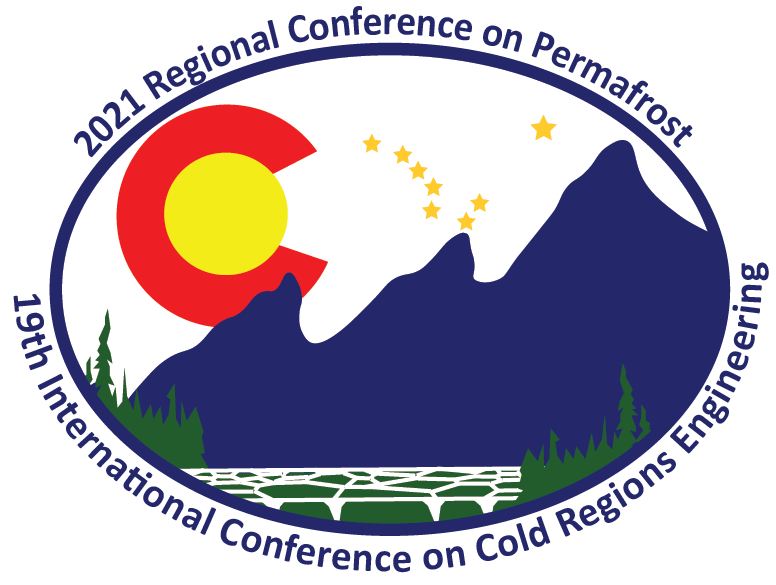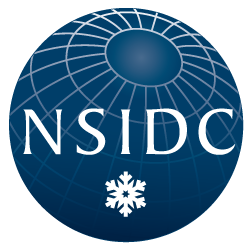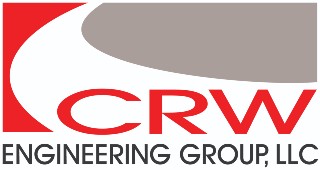- Home
- Membership
- Publications
- Activities & Programs
- Resources
- Login

Conference SessionsWe have updated our conference sessions! You can view full session descriptions and abstracts submitted to the sessions by clicking on the links below. You can download a document with all sessions and session chair contact information here (PDF, 0.3 MB). Monday, October 25:
Tuesday, October 26:
Wednesday, October 27:
Thursday, October 28:
Session DescriptionsGeophysical and Remote Sensing Investigations of Changing Permafrost Landscapes [Session 1]Chairs: Stephanie James, Burke Minsley, Neal Pastick Download Abstracts (PDF, 0.5MB) Permafrost landscapes are experiencing unprecedented changes in ecosystem function and structure as the result of rapid permafrost thaw and climate warming. The temporal and spatial variations in land surface conditions (e.g. land cover, topography) and subsurface properties (e.g. liquid water content, ground ice, soil characteristics) in these environments have strong controls on permafrost vulnerability, hydrology, and carbon balances, but can be difficult to monitor over large areas and at high resolution. Geophysical and remote sensing observations are critical to studies of permafrost regions where changes occur both at the land surface and at depth, and through ongoing advancements in instrumentation, computing power, and new measurement and modeling strategies, geophysical remote sensing and imaging techniques are well positioned to address many open cryospheric research questions. In this session, we are covering new insights from, and advancements in, remote sensing and geophysical observations of permafrost landscapes. Take me back to the list of sessions
Infrastructure Engineering on Permafrost [Session 2]Chairs: Xiangbing Kong, Peppi Croft, Karlis Riekst Download Abstracts (PDF, 0.5MB) Infrastructure construction on continuous and discontinuous permafrost coupled with changing climate conditions lead to changed thermal conditions of the surface and subsurface, commonly resulting in permafrost degradation. Degradation of thaw-sensitive permafrost reduces the infrastructure serviceability level, increases maintenance cost and risk for infrastructure users. Potential social and economic consequences of infrastructure engineering failures in permafrost environments are considerable, especially for risk-sensitive infrastructure (airstrips, oil and gas pipelines, highways, utilities and others). This session aims to advance the frozen ground engineering profession by sharing challenges and solutions addressing sustainable infrastructure design, construction, and maintenance on thaw-sensitive permafrost. The session includes presentations that provide insight into infrastructure engineering including, but not limited to: innovative construction methods and monitoring techniques; innovative ground cooling technologies; practical limitations and uncertainty of computer-aided geothermal design; and assessments of risk, cost, and adaptive strategies in response to climate change. Take me back to the list of sessions
Taking a Look at the Overlooked: Microorganisms and their Processes in Permafrost [Session 3]Chairs: Robyn Barbato, Mary-Cathrine Leewis, Stacey Doherty Download Abstracts (PDF, 0.5MB) Intact permafrost harbors a diverse group of both active and dormant microorganisms. As permafrost thaws, these microbial populations face dramatic changes in both their physical and chemical environments. Unknowns remain regarding many microbial-mediated processes that have the potential to alter feedbacks between permafrost regions and the global climate system, from the rate and fate of transformation of the large stock of permafrost organic matter to changes in aboveground vegetation. This session invites contributions that cover diverse aspects of permafrost microbiology and make connections with permafrost physics and chemistry. We highly encourage submissions that explore the diversity and activity of microbial communities in intact and thawing permafrost soils using a wide range of techniques including ‘omics, culturing, and modelling of microbial processes through laboratory or field studies. Take me back to the list of sessions
Ground-ice Distribution and its Role in Permafrost Carbon Dynamics [Session 4]Chairs: Christina Schaedel, Charles Abolt Download Abstracts (PDF, 0.5MB) Melting ground ice in response to increasing air temperatures causes differential ground subsidence above ice-rich permafrost. The altered topography changes the storage and flow of water, which in turn affect biological components of cold ecosystems, including fluxes and storage of carbon in the Arctic and other permafrost regions. Accordingly, the consequences of thawing ice-rich permafrost extend beyond the those regions, yet we lack detailed characterization of ground-ice coverage. The melting of ground-ice can lead to drier or wetter soil conditions and colder or warmer winter soils, respectively, both of which control the fate of soil carbon. This session aims to link studies of ground-ice distribution and permafrost carbon dynamics, from the sub-meter to pan-Arctic scales, and welcomes the broad range of approaches and disciplines that can refine our understanding of permafrost carbon emissions during ice-rich permafrost thaw. Take me back to the list of sessions
New Remote Sensing Technology and Applications to Map Regional Permafrost Vulnerability [Session 5]Chairs: Yonghong Yi, Lin Liu, Benjamin Jones Download Abstracts (PDF, 0.5MB) Regional climate warming has induced widespread permafrost degradation in both high latitude and altitudinal regions. Sparse and sporadic in situ observations in these remote regions greatly limit our ability of mapping regional permafrost vulnerability and characterizing system-level changes associated with permafrost degradation. With a wide range of satellite and airborne observations available from current and future satellite missions, such as SMAP, SMOS, Sentinel-1, ICESat-2, NISAR and BIOMASS, remote sensing data is increasingly becoming an essential element to address this limitation. This session highlights researches that develop new remote sensing technology or applications to map regional permafrost vulnerability and describe the linkages between frozen ground, terrestrial ecology and hydrology. We address studies that develop new approaches to integrate multi-sensor remote sensing such as Radar and Lidar as well as active and passive sensors that focus on better characterizing surface geomorphology, vegetation, soil moisture and freeze/thaw conditions in permafrost regions. We also welcome studies that develop new data-driven approaches or models that effectively use satellite/airborne remote sensing data in regional applications. Finally, we include global and regional assessment studies to demonstrate what needs to be observed to ensure long-term permafrost changes at regional scales being adequately quantified. Take me back to the list of sessions
Geologic Terrain Analysis, Geomorphic Mapping in Support of Infrastructure Development [Session 6]Chairs: Michelle Gavel, Trent Hubbard Download Abstracts (PDF, 0.5MB) Terrain analysis provides site-specific and corridor characterization based on desktop studies of existing geologic mapping, satellite imagery, aerial photography, elevation data, and drone surveys, as well as incorporation and extrapolation of reconnaissance data, ground temperature measurements, geophysical surveys, and subsurface borehole information. These analyses can anticipate engineering soil and ground ice conditions and inform engineering assumptions for planning, field exploration, and recommendations in cold regions. This mapping can be used for route selection and site suitability studies allowing infrastructure to be constructed in areas with optimal site, soil and ground ice conditions. Identification of poor soil, areas of massive ice, and permafrost degradation affect engineering considerations, constructability, and ultimately cost. The availability and quality of granular construction materials also can greatly affect the costs and feasibility of projects and can influence site selection and routing. In this session you will find presentations focusing on methods and project examples of geologic terrain analysis and geomorphology supporting engineering projects in permafrost and cold regions. Take me back to the list of sessions
Global Terrestrial Network for Permafrost (GTN-P) [Session 7]Chairs: Alexey Maslakov, Sarah Marie Strand, Dmitry Streletskiy Download Abstracts (PDF, 0.6MB) The Global Terrestrial Network for Permafrost (GTN-P) is the primary international programme concerned with long-term monitoring of permafrost. The core mission of GTN-P is to maintain a comprehensive and standardized long-term monitoring network to provide consistent, representative, and high quality long-term data on permafrost parameters. GTN-P ensures the distribution and availability of these data that can be used to assess the state of permafrost conditions and changes over time across Earth’s high latitude and altitude regions. This session will focus on the latest developments in permafrost monitoring and results of long-term analyses on permafrost and active layer measurements. All members of GTN-P, National Correspondents, and potential new members are invited to contribute with presentations sharing findings on the thermal state of permafrost and active layer dynamics from local, regional, and global scales. Take me back to the list of sessions
Transportation Engineering in Permafrost [Session 8]Chairs: Joey Yang, Fujun Niu Download Abstracts (PDF, 0.5MB) Transportation engineering in permafrost regions under a changing climate faces many challenges at various stages of engineering, including site characterization, analysis and design, construction, and performance monitoring during operation. This session aims to provide a platform for engineers and scientists to present the latest progress in various aspects of transportation engineering in the broad cold regions. This session incldues presentation about 1) Effective technologies/methods for site characterization and detection of ice-rich/thaw unstable permafrost or ice wedges, 2) Fundamental properties (such as mechanical, thermal, electrical, etc.) of frozen soils and modeling, 3) Frozen soil-structure interaction, 4) Climate change impact on transportation infrastructure, 6) Innovative construction methods, 7) Case studies on the short- and long-term performance of transportation infrastructure, and, and 8) Other related topics within this theme. Take me back to the list of sessions
WORKSHOP: Permafrost Data Systems [Session 9]Chairs: Nick Brown, Matt Jones, Peter Pulsifier Download Abstracts (PDF, 0.5MB) Permafrost research is increasingly data-driven due to advances in modelling, machine learning, and high-performance computing. As the research field develops, integrating data beyond ground temperature is becoming increasingly important. Regional and national organizations are developing capacity for storing and disseminating this permafrost data. Access to the data is still primarily download-based, but there is also work towards providing data-as-a-service and cloud-based platform models. Despite this, there remains a great deal of legacy data that has not yet made it into the realm of open data and is still inaccessible. This workshop will be aimed towards individuals and organizations involved in the development of permafrost data systems as well as creators and users of permafrost data. The objective of the workshop is to connect researchers and practitioners who are actively involved in the production, curation, and dissemination of permafrost data; to identify current problems and limitations; and to recommend how efforts can be better connected or coordinated. The expected output from the workshop is a short report summarizing the conclusions from the workshop and describing recommended next steps. Take me back to the list of sessions
Snow, Vegetation, and Permafrost Interactions and Advancements in Sensing/Monitoring Technologies [Session 10]Chairs: Katrina Bennett, Anna Wagner, Julian Dann Download Abstracts (PDF, 0.5MB) Snow, vegetation, and permafrost are intricately linked across the cold regions of the globe. Snow protects the ground during the winter and provides insulation for the permafrost, which guards against cold temperatures from penetrating deep into the soils. Vegetation change, including an increase in shrubs has been noted to be changing, which is linked to increases in snow as the shrubs tend to influence drifting and redistribution of moisture. However, the dynamic and changing nature of both snow and vegetation mean that these interactions could shift with climate impacts. While the interactions among snow-dominated landscapes and permafrost are abundant, research efforts linking these disparate fields remain sparse. Part of the challenge is the paucity of accurate distributed snow measurements and model results. Single-point, ergodic, and remote sensing data collection campaigns are limited in their range and/or resolution in space and time. Meanwhile, recent in situ field- and watershed-scale observations using dense sensor deployments have captured multi-scale transformations of permafrost. Such observations create opportunities to test hypotheses and numerical models in cold region environments and systems. The session includes presentations about snow, vegetation, and permafrost interactions—including advancements in remote sensing and monitoring technologies of such interactions--within cold regions across the globe with particular emphasis on the impacts to the hydrologic cycle and climate change impacts. Also included are contributions on novel advances in the field of in situ sensor technology observing the evolution of permafrost systems. Take me back to the list of sessions
Planetary Permafrost [Session 11]Chairs: Joseph Levy, Ali Bramson Download Abstracts (PDF, 0.5MB) Permafrost is a dominant surface type on many worlds, from polar cold traps of the inner solar system, to the icy plains of Mars, to the profoundly cryotic icy moons of the outer solar system, and beyond. This session aims to capture: 1) the current state of knowledge about the inventories of ice-rich permafrost across the Solar System, 2) the processes that govern its formation and evolution, and 3) the next steps needed to understand the climatic and geologic histories recorded in planetary permafrost deposits, as well as the implications of these deposits for future in situ resource utilization (ISRU). This session welcomes a broad range of perspectives on permafrost across the Solar System, including but not limited to remote sensing, scientific characterization, future exploration and mission concepts, engineering criteria and constraints for ISRU, and Earth analog comparisons. A major goal of this session is cross-pollination between the planetary permafrost community and the Arctic/Antarctic permafrost science and engineering community. To support that goal, we cover both overview presentations that can provide the terrestrial community with synthesis of existing planetary permafrost research, as well as presentations on specific research and applications, from both new and experienced researchers, that can serve as the launching point for idea exchange between Earth and space-focused teams. Take me back to the list of sessions
Engineering Properties of Frozen Soils [Session 12]Chairs: Amy Steiner, Kannon Lee Download Abstracts (PDF, 0.5MB) Presentation of the latest in the engineering properties of frozen ground including but not limited to: Effect of temperature, salinity, and loading rate on soil strength, thaw settlement, strength of warm permafrost, resistivity of frozen soils, new methods for collecting frozen ground, In-situ thermal monitoring, and creep rates of frozen soils. Take me back to the list of sessions
WORKSHOP: Permafrost Discovery Gateway: Big Imagery Permafrost Science Today and Tomorrow [Session 13]Chairs: Anna Liljedahl, Amber Budden Download Abstracts (PDF, 0.3MB) Permafrost Discovery Gateway (PDG) is a web-based platform aimed to enable the creation and exploration of big geospatial permafrost data with the primary end-user being the Arctic research community and, secondary, the general public interested in the changing permafrost landscape. This workshop is aimed to 1) provide a quick overview about the new developments within the PDG (<20min), including the release of an interactive demo version by the Arctic Data Center for visualization of new big imagery permafrost geospatial datasets, and 2) to gather end-user feedback on the PDG tools and resources that are under development (~30 min break-out groups). The workshop also aims to bring the permafrost science community together on the challenges and opportunities in imagery processing using AI and big data to address permafrost science community needs in, for example, training data cyberinfrastructure support, workflow optimization for processing large datasets including the processing of MAXXAR (e.g. the MAPLE code) and Landsat images within the Clowder cyberinfrastructure framework etc. All PDG presentations will be available in the morning posters session. Take me back to the list of sessions
General Session: Permafrost and Cold Regions Engineering [Session 14]Chairs: John Thornley, Erin Trochim Download Abstracts (PDF, 0.5MB) This session is for permafrost and cold region engineering from a wide range of disciplines, scales, and methods. Take me back to the list of sessions
Dynamics of Permafrost Rivers, Deltas, and Coastlines [Session 15]Chairs: Jennifer Frederick, Anastasia Piliouras Download Abstracts (PDF, 0.5MB) Permafrost rivers, deltas and coastlines are increasingly vulnerable to anthropogenic and climate-driven changes. These changes influence coastal erosion rates, storm-surge flooding events, and sea-level rise with potentially serious impacts on wildlife habitat, subsistence hunting grounds, coastal communities, and critical civilian and military infrastructure. These threats are likely to intensify in the future as temperatures warm and declining sea-ice extent exposes permafrost coastlines for longer periods of time. Frozen ground also strongly influences the magnitude, rate, and timing of fluxes of water, sediment, an biogeochemical constituents delivered to channel networks in permafrost watersheds. As both permafros and river temperatures warm, the rate and pattern of permafrost change may accelerate and have feedbacks on the dynamics and planform characteristics of these landscapes. To understand, model, and project future vulnerability of permafrost rivers, deltas and coastlines, accurate maps of bathymetry, topography, and geology are needed along with information on coastal behavior, geomorphology, and key processes driving coastal change. We invite a breadth of studies that cover topics related to Arctic and Antarctic coastal changes, the driving forces, geomorphological processes, and impacts on ecosystem ecology, biogeochemistry, infrastructure, and social systems. Contributions from studies that improve understanding of permafrost coastal dynamics and the interactions between rivers and deltas and permafrost through remote sensing, time-series analysis, field surveys, and modelling are welcome. Take me back to the list of sessions
Permafrost Dialogue: New Avenues of Communication for Permafrost Science, Outreach, & Education [Session 16]Chairs: Brendan Rogers, Jennifer Watts Download Abstracts (PDF, 0.5MB) Communicating the dynamics and implications of changes in permafrost systems to policy makers, the general public, engineers, and between different scientific communities can be challenging. Scientific terminology has evolved over the last few decades, particularly with the rapid increase in permafrost terminology, leading to inconsistencies and confusion when communicating permafrost science. Outside of scientific communities, many people do not have a personal connection with permafrost environments, including high latitudes and high altitudes. Yet the changes occurring across permafrost landscapes impact the global community. This session asks, “how can scientists more effectively communicate permafrost science, share stories of changing permafrost landscapes, and make information more accessible to enable discovery and knowledge-generation by the public?” This session seeks to foster conversations that can improve the communication of permafrost science and help identify opportunities for the impactful use of multimedia and storytelling to promote dialog, public engagement, and advances in climate policy. Take me back to the list of sessions
Water in Permafrost Systems – An Interdisciplinary Consideration [Session 17]Chairs: Eva Stephani, Josh Koch, Stephanie Wright Download Abstracts (PDF, 0.5MB) The linkages and feedbacks between components in permafrost settings result in highly dynamic systems that are sustained by heat and mass transfer. The geosystem approach recognizes that “the whole is greater than the sum of its parts”, which is a key concept to understand permafrost dynamics and its coupling of thermal, mechanical, geomorphological, hydrological, and/or biogeochemical processes operating at variable temporal and/or spatial scales. Water is an intrinsic component of permafrost geosystems with potentials for strong feedbacks. The abundance of interactions between water and other components in permafrost geosystems results in a wide range of relevant topics in basic and applied sciences. Furthermore, as we assess the role of water with approaches distinctive of our own disciplines, gaps may form at the intersection of these disciplines, yet critical linkages and processes likely fall within those gaps. This session intends to bring together researchers and practitioners from various fields for an interdisciplinary session involving presentations and discussion on the role of water in permafrost geosystems and its potential effects on the resilience and vulnerability of these systems to changes, including potential systemic thresholds. Take me back to the list of sessions
WORKSHOP: Arctic Environmental and Engineering Data and Design Support System (Arctic-EDS) [Session 18]Chairs: Sveta Stuefer, Margaret Darrow, Charles Parr This workshop invites engineers and scientists to contribute to the development of the Arctic Environmental and Engineering Data and Design Support System (Arctic-EDS). This new system will update the Environmental Atlas of Alaska, providing web-based maps of historical observations and climate projections, modules, and notebooks to aid in engineering decisions related to Alaska and other cold regions. We are seeking engineering community engagement to provide feedback on Arctic-EDS development and input on prioritizing web-based notebooks and modules with specialized engineering calculations. This session will be moderated by members of the Arctic-EDS team, who will introduce the project, explain the innovative modules/notebooks, and provide a working example of a project application. Take me back to the list of sessions
Unique Challenges of Permafrost in Mountain Areas [Session 19]Chairs: Alexandre Bevington, Ludovic Ravanel Download Abstracts (PDF, 0.5MB) Mountain permafrost, as an important variable of the cryosphere, continues to offer unique challenges to the scientific community, these include a high degree of spatial heterogeneity in topo-climatic and bio-physical characteristics, challenging conditions for field work and in-situ monitoring, and often rapid environmental evolutions under climate change (e.g. deglaciation, vegetation expansion, mass wasting processes and related hazards/risks). Changes occurring to other cryospheric components - snow and glaciers - can impact mountain permafrost directly, or through a feedback system, which increases the complexity of mountain hydrological and geomorphological processes. This session includes submissions that relate to the unique challenges of monitoring and modelling permafrost in mountains, and contributions that advance our understanding of mountain permafrost, and the processes that govern its evolution, behavior, and resultant impacts. We especailly appreciate submissions that aim to improve our understanding of processes (e.g. active layer dynamics, rock glacier kinematics, thermo-hydro-mechanical behaviour of rock slopes) and hazards. We thus invite the mountain permafrost community to gather at the RCOP in 2021 to present and discuss recent findings and the (uncertain) future of the high mountain areas! Take me back to the list of sessions
Pipelines, Construction, Mining, and Oil and Gas in Cold Regions [Session 20]Chairs: Jessica Worthington, Joshua Greenhill Download Abstracts (PDF, 0.5MB) This session will address methods of construction in permafrost for the construction, oil and gas, and mining industries. Topics will include: Factoring in climate change and design/construction methods, Industrial roadways on permafrost, Native villages on degrading permafrost and general solutions, Use of remote imaging to measure heave and subsidence, use of insulation in roads and pads, exploration and evaluation methods. Take me back to the list of sessions
Rock Glacier Inventories and Kinematics [Session 21]Chairs: Alessandro Cicoira, Yan Hu, Line Rouyet Download Abstracts (PDF, 0.5MB) Rock glacier inventories have been set up for decades all around the world, yet without coordination, making their global assemblage and uniform completion not feasible. Similarly, the assessment of rock glacier kinematics was limited to a handful of landforms and mostly restricted to short time series. Recently, numerous datasets of increasing quality have been made available for numerous rock glaciers, particularly with the development of remote sensing techniques. Consequently, the potential for mapping and monitoring rock glaciers is rapidly advancing. The IPA Action Group on rock glacier inventories and kinematics (2018-2023), also with the support of ESA CCI+ Permafrost, is promoting both the establishment of standards for inventorying rock glaciers, including refined indications on the activity rate, and the integration of rock glacier kinematics as a new associated parameter to Essential Climate Variable (ECV) Permafrost within the Global Climate Observing System (GCOS) reflecting indirectly the evolution of mountain permafrost. In this session, we include contributions from various approaches (in-situ measurements, remote sensing, geophysics, numerical modelling) that foster our understanding of rock glacier morphology and kinematics with the goal of stimulating the scientific discourse and sustaining the efforts presently being developed by the IPA Action Group community. Take me back to the list of sessions
Changing Biogeochemistry of Permafrost Regions [Session 22]Chairs: Kevin Schaefer, Kimberly Wickland Download Abstracts (PDF, 0.5MB) Changing climate in permafrost regions has important implications for biogeochemical cycling of numerous constituents including carbon, nitrogen, and mercury. It affects the size of constituent pools available for active cycling upon permafrost thaw, it affects the rates of processes, and ultimately affects the movement of constituents throughout the biosphere-hydrosphere-atmosphere system. This session focuses on how permafrost region biogeochemistry of carbon, nutrients, and contaminants is changing in terrestrial and aquatic ecosystems over a range of temporal and spatial scales. Field, modeling, and synthesis studies are welcome. We encourage studies on coupled biogeochemical cycles, studies on contaminants, and studies that merge field-based data with models for upscaling and projections. This session focuses on the impacts of climate change on permafrost biogeochemistry. This includes the impacts on the carbon and nutrient cycles. This also includes contaminant transport, particularly mercury. This includes field studies, syntheses, and modeling studies. Take me back to the list of sessions
RCOP & ICCRE Main PageConference Sponsors
|





























